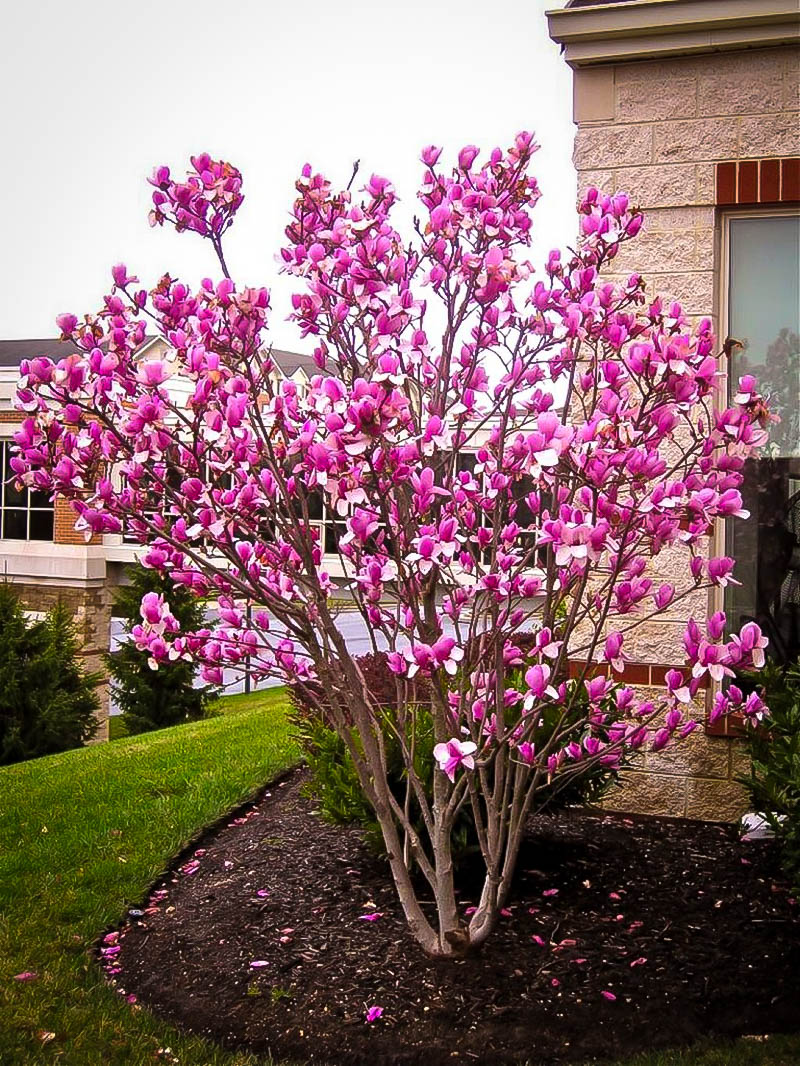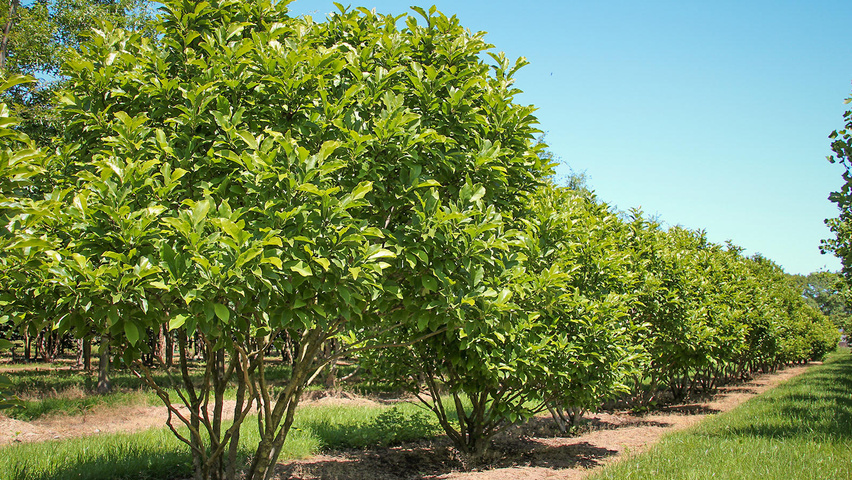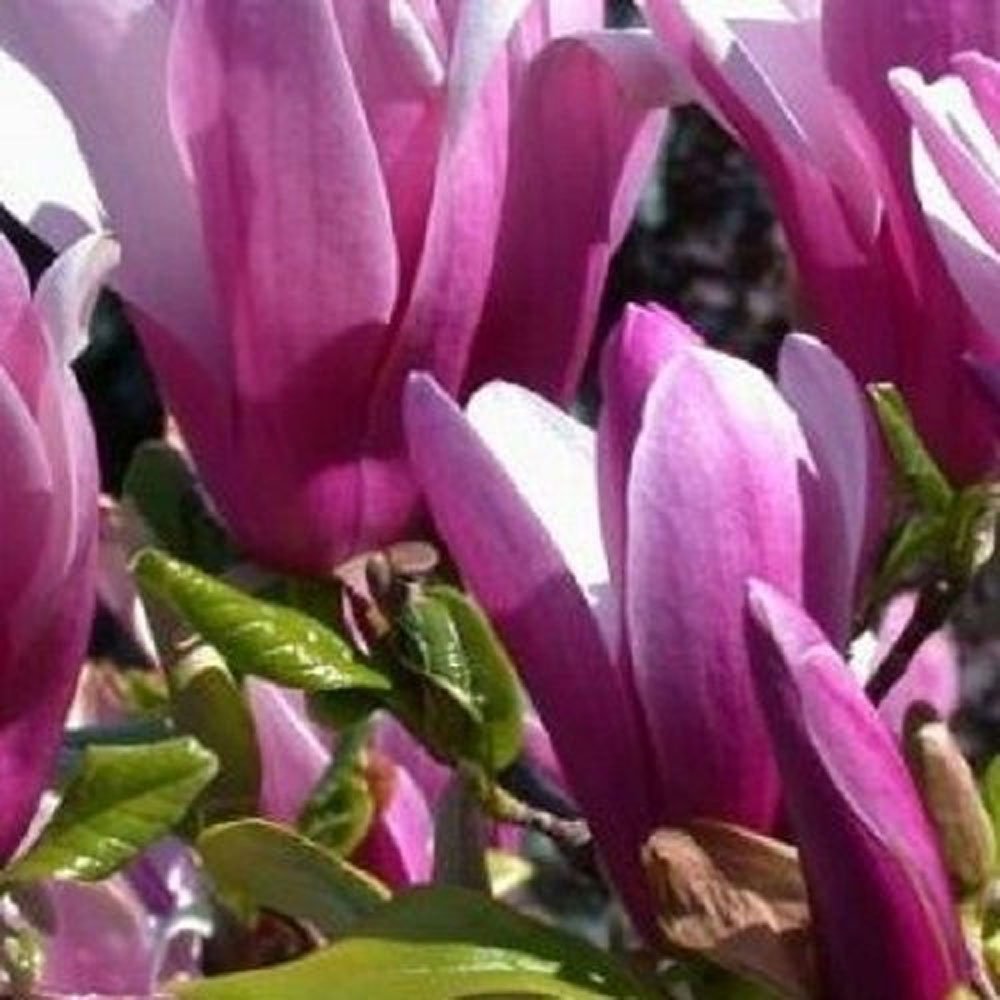

Susan Magnolia (Magnolia x ‘Susan’)
Best grown in organically rich, neutral to slightly acidic, medium moisture, well-drained soils in full sun to part shade. Appreciates a root-zone mulch to help retain soil moisture. Also appreciates a location protected from strong winds, but avoid warm southern exposures which may promote premature bud opening in spring. Fleshy root system is easily damaged during transplanting, so it is best to select a landscape location carefully and leave this magnolia undisturbed once planted. Prune as needed immediately after flowering. Usually requires little pruning other than removal of dead or damaged branches.
‘Susan’ is a late-blooming magnolia that is less apt to suffer frost damage in spring. Beautiful specimen flowering shrub for lawns, foundations, shrub borders or woodland peripheries. May be grown as an informal hedge.
Mature Height: 8′-12′
Mature Spread: 8′-12′
Zone: 4
Sunlight: Full sun to partial shade
Soil Preference: Tolerant of clay soil
Nurseryman’s Notes: ‘Susan’ is a cross between M. liliiflora ‘Nigra’ and M. stellata ‘Rosea’. It is part of the Little Girl series (‘Ann’, ‘Betty’, ‘Jane’, ‘Judy’, ‘Pinkie’, ‘Randy’, ‘Ricki’ and ‘Susan’) of hybrid magnolias that were developed at the National Arboretum in the mid-1950s by Francis DeVos and William Kosar. Plants in this series flower about 2-4 weeks later than M. stellata and M. x soulangiana, thus reducing the risk of damage to flowers from late spring frosts. ‘Susan’ is primarily noted for its compact shrubby habit, fragrant fuchsia flowers and late bloom (mid-April to early May). It is a slow-growing, deciduous shrub or small tree that typically rises over time to 8-12’ tall. Goblet-shaped flowers, each with 6 slightly twisted tepals, bloom shortly before the foliage begins to appear. Flowers (to 5” wide) are purple-red or fuchsia, with paler tones inside. Flowers may sporadically repeat bloom in mid summer. Ovate medium green leaves (to 6” long). Leaves turn yellow-bronze in fall. Can be shaped by pruning or left natural.

